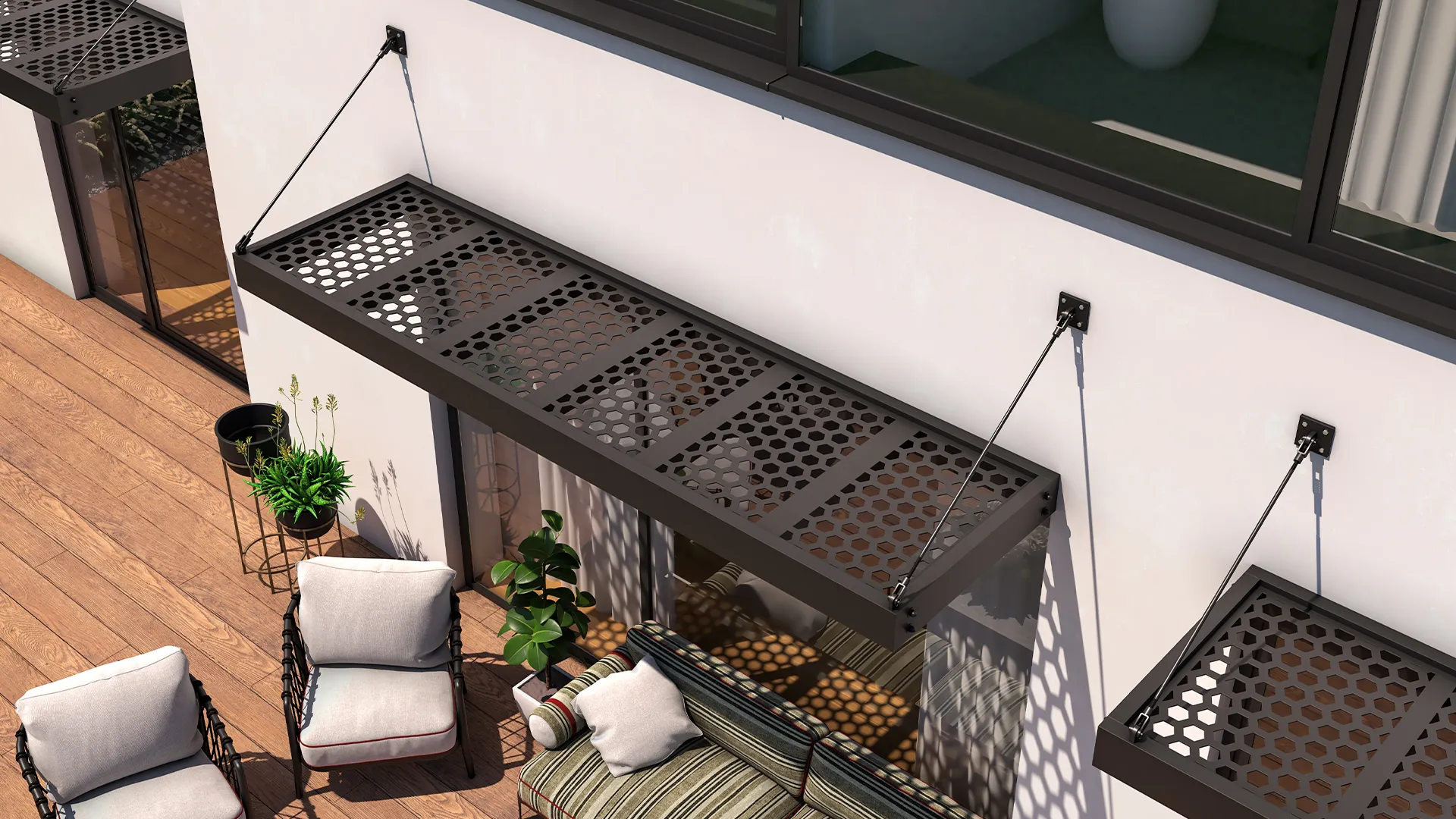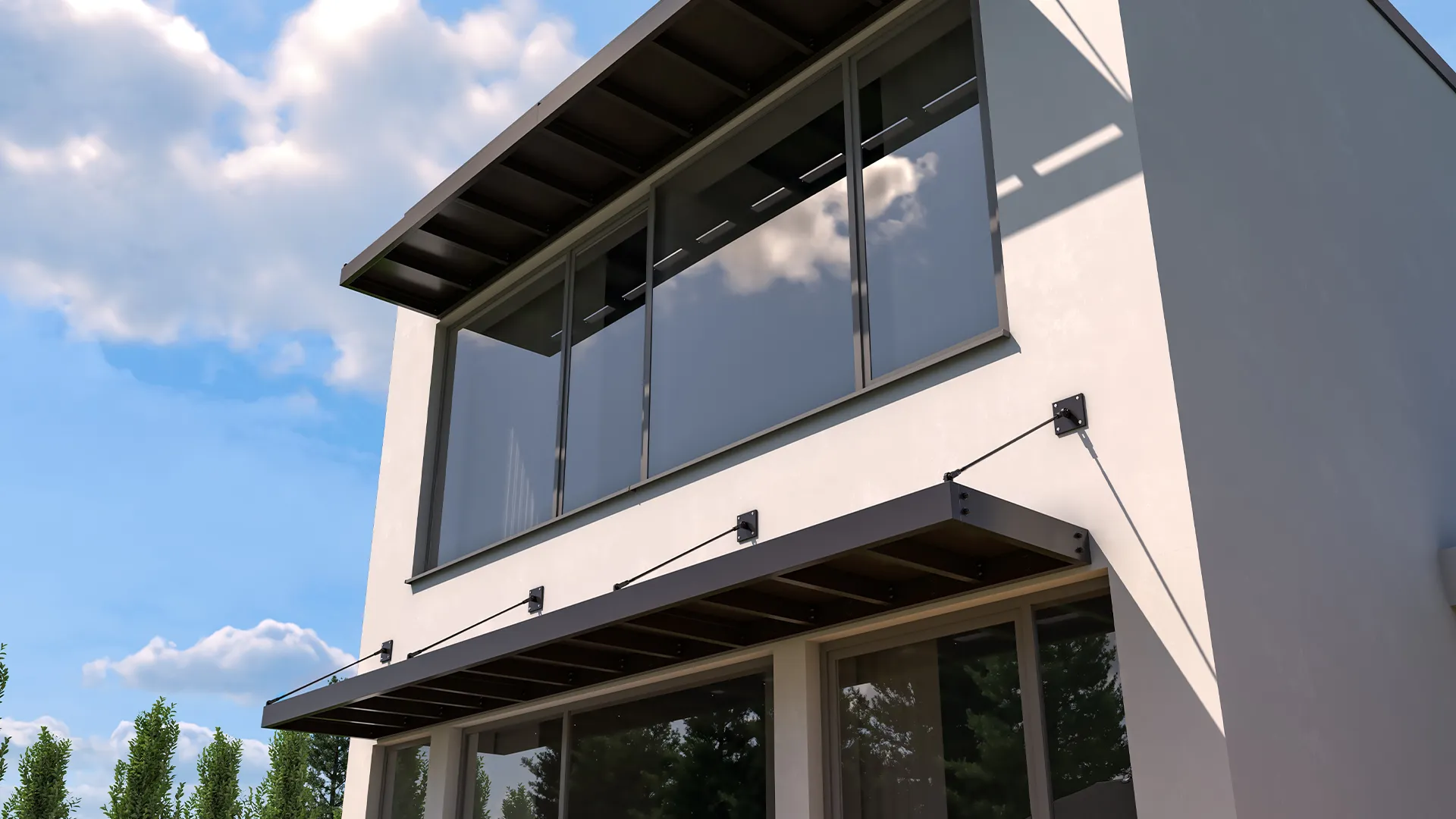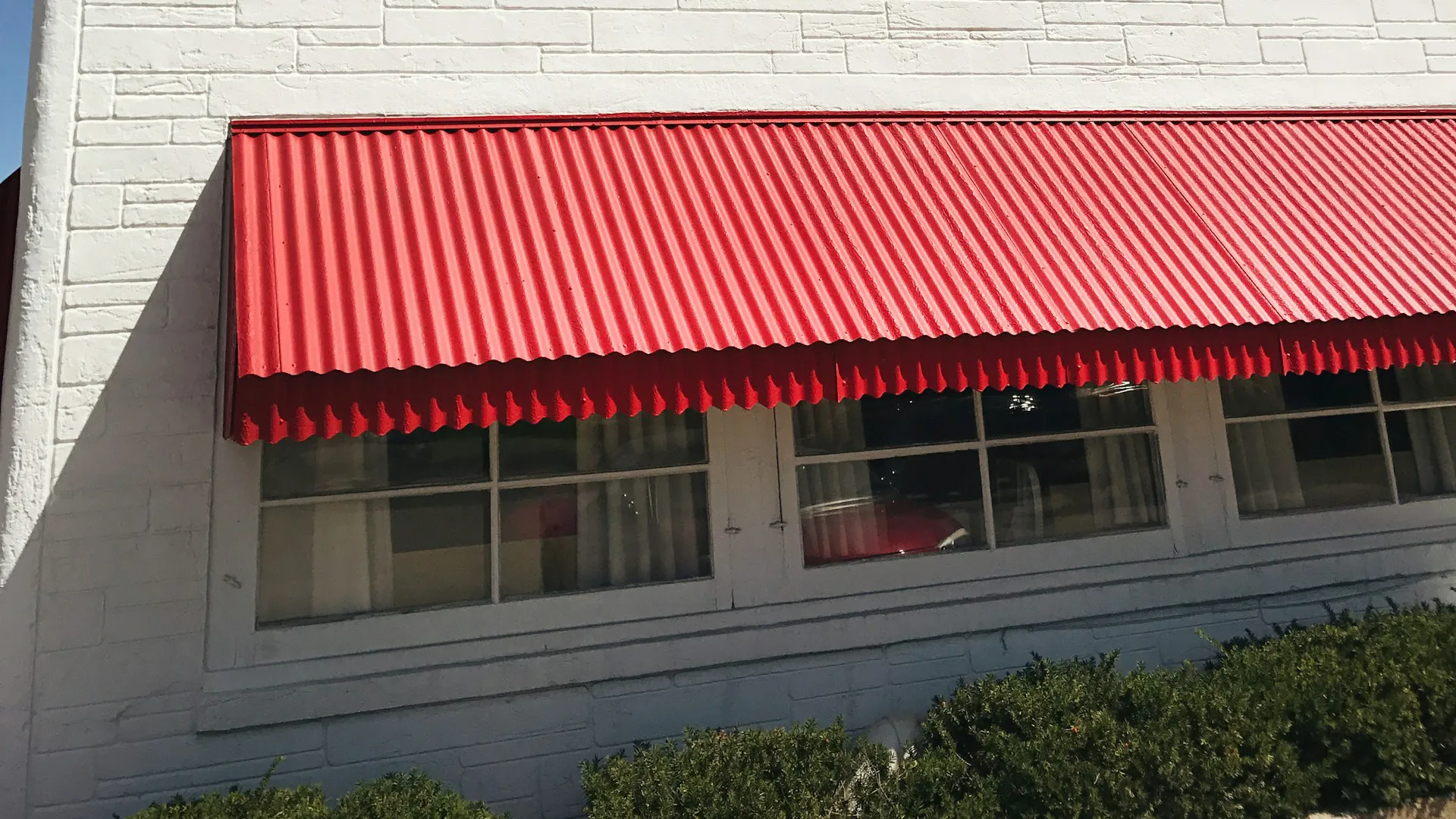Are aluminum awnings or fabric best for your home?
According to the U.S. Department of Energy, the average American household spends over $1,800 annually on energy bills, with cooling costs making up a significant portion of this expense. Recent data from the Professional Awning Manufacturers Association (PAMA) indicates that properly installed awnings can reduce home cooling costs by up to 25%. Let’s explore how aluminum and fabric awnings compare, helping you make an informed decision that balances durability, cost, and style.

Important Factors to Consider When Choosing Awnings
1. Durability and Maintenance
While fabric awnings typically last 5-8 years with regular maintenance, aluminum awnings can endure for decades with minimal maintenance. The longevity and general lack of maintenance required of aluminum make it a great long-term option. However, this longevity comes with an upfront cost that is typically more expensive than fabric.
2. Weather Resistance
Both materials offer distinct advantages: aluminum excels in harsh conditions like heavy snow and intense sun, while quality fabric awnings provide better wind resistance due to their flexibility.
3. Aesthetics and Customization
Fabric and aluminum awnings both offer a plethora of design possibilities with many different color and pattern combinations.
4. Energy Efficiency
Studies show that properly installed awnings can reduce cooling costs by up to 25%. Both materials are effective, but their performance varies by climate and installation.
Comparing Your Options
Aluminum Awnings: Pros and Cons
Aluminum awnings offer exceptional durability, and a lifespan of many decades. They require only basic annual maintenance to maintain their appearance and functionality. While the initial investment per window can be high, these structures excel in many different weather and climate conditions and are ideal for regions with significant snowfall or intense sun exposure.
The virtually maintenance-free nature of aluminum awnings makes them an attractive option for busy homeowners. Their superior protection against snow loads ensures year-round reliability, while their resistance to fading, tearing, and fire provides peace of mind. However, the higher initial cost can be a significant barrier for some homeowners. Additionally, while extremely durable, aluminum awnings can dent under impact from falling branches or severe hail.

Fabric Awnings: Pros and Cons
Fabric awnings provide a more economical initial investment with a shorter lifespan than aluminum awnings. Fabric requires more frequent cleanings and repairs than aluminum but the lower upfront cost makes them more accessible. In humid conditions, fabric awnings may develop mold if not properly maintained, and prolonged sun exposure can lead to fading or deterioration of the material over time.
The design versatility of fabric awnings allows homeowners to easily update their home’s exterior appearance when desired, and their natural flexibility provides excellent wind resistance. Modern fabric awnings can be easily replaced or updated to match changing design preferences.

Making Your Decision
Climate Considerations
Your local weather patterns should heavily influence your choice. Regions with heavy snowfall benefit most from aluminum awnings, as they can withstand substantial snow loads without buckling. Areas prone to high winds might be better served by fabric awnings, which can flex and adapt to strong gusts. Both materials perform well in intense sunlight, provided they’re properly treated and maintained.
Budget Planning
Short-term budget constraints often favor fabric awnings due to their lower initial cost. However, aluminum awnings typically provide better long-term value due to their extended lifespan and minimal maintenance requirements. Most homeowners see a return on their awning investment within just a couple of years through reduced energy costs, regardless of the material chosen.
Style Preferences
Both fabric and aluminum awnings are incredibly versatile in terms of style, and both offer many different patterns and color combinations. It ultimately comes down to whether you prefer the clean, sturdy look of aluminum awnings or something more easy-breezy like fabric awnings. Keep in mind the style of your home and whether you believe aluminum or fabric would compliment the exterior most.
Maintenance Tips
Aluminum Awnings
Annual maintenance should include checking all mounting points for security and stability. To maintain its appearance, clean the awning surface yearly using a mild soap solution. Regular inspection of fasteners helps prevent potential issues before they become significant problems.
Fabric Awnings
Protect your fabric awning investment by retracting it during severe weather events and performing thorough cleaning twice yearly. Apply a water-repellent coating according to manufacturer specifications to extend its lifespan. In regions with harsh winters, consider storing fabric awnings during the off-season to prevent unnecessary wear and tear.
Making The Right Choice for Your Home
Your choice between aluminum and fabric awnings ultimately depends on your specific needs, climate, and long-term plans. While aluminum awnings offer unmatched durability and minimal maintenance, fabric awnings provide greater design flexibility and lower upfront costs. Consider your local weather patterns, maintenance preferences, and aesthetic goals when making your decision.